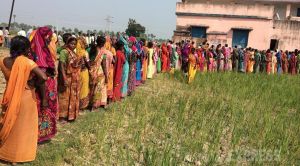The Master and the Eternal City
As possibly the best known Hindi-Urdu author of our times, Premchand (1880-1936) has found so secure, but in the meantime also so dusty, a n...

As possibly the best known Hindi-Urdu author of our times, Premchand (1880-1936) has found so secure, but in the meantime also so dusty, a niche in the halls of fame as the classic author of rural north India, that it takes some refocussing of our lens to register in any fine detail the fact that when with the publication of Sevasadan he first rose to fame, it was as a sensitive and perceptive cartographer of a city. This city was none other than Varanasi, the holiest of all cities in India, in the throes of modernising and refashioning its image, even as it made a bid to drive away its once famed courtesans from the vicinity of the Chauk, or central square, from which ran arteries into its nethermost nooks.
There is much hidden cultural history in the publication history of Sevasadan. It was written first in Urdu in 1917 under the titillating title: Bazar-e-Husn , or the ‘Bazaar of Beauty’, though, given the exigencies of the market and the whimsy of the publisher, it had to wait till 1924 to be published in its Urdu form. However, it shot into almost instant fame, when it was recast in Hindi and published in 1918, under the sober and uninspiring title, Sevasadan or the ‘House of Service’ — the reference was to the educational institution which was erected to house the daughters of former courtesans. Seva and sadam however also carried other meanings. Seva, or service, could also be of the kind which the courtesans of the city supplied to their clientele, and sadan, or abode, was also the name of one of the central male protagonists of the novel. An erring and largely unfulfilled young man, Sadan had been in love initially with one sister, the beautiful and enticing Suman, whom he had first met in the Bazaar of Beauty. Eventually he married the other sister, the more pacific Shanta, to whom he had been betrothed all along and who had suffered the misery of her lot with virtuous resignation.
Though the various connotations of the title must also have existed for contemporary readers, it was surely its most apparent meaning, with its obvious allusion to social reform, the puritanical rather than that which suggested the lurid, which accounted for the initial appeal of the novel. It was the era of high nationalism; Hindi was seeking to set up its own respectable literary canon; and if nation, woman, social reform, and the reordering of the city landscape could be brought together thus educatively, the novel could do none other than win public approval. But the novel’s enduring popularity may have had more to do with the interplay of the various meanings, and of voices other than the calm, analytical, auctorial, which make possible more than one reading of how seva and sadan came variously to be conjoined but also queried.
In addition to its vividly dramatic dialogues, its deep psychological insight into persons and processes, the narrative is also girded at all times by a keen sense of social history. It registers crucial societal transitions, even as they take place, from known patterns of life to new, untried ones. One transition is of that from the country to the city; many of the central characters undertake or undergo this traumatic passage. After her marriage, Suman is transported from her well-to-do home in a rural district to the stench of the narrow lanes in the inner city and the claustrophobia of the small dark rooms in which she houses with her elderly husband. Sadan, in running away from his landowning village home, finds himself filled with fear and foreboding as he dashes across field and wood to catch his night train to Benares. Two miles outside the village there is a pipal tree, its dense foliage filled with ghosts which appear in all shapes and forms to hinder the wary traveller. Sadan freezes into inaction and can cross its dark presence only when he hits upon the idea of singing verses from Tulsidas’ Ramayan at the top of his lungs to fend off the evil spirits which lurk there.
Excerpted with permission from OUP





- 01
- 02
- 03
- 04
- 05


























